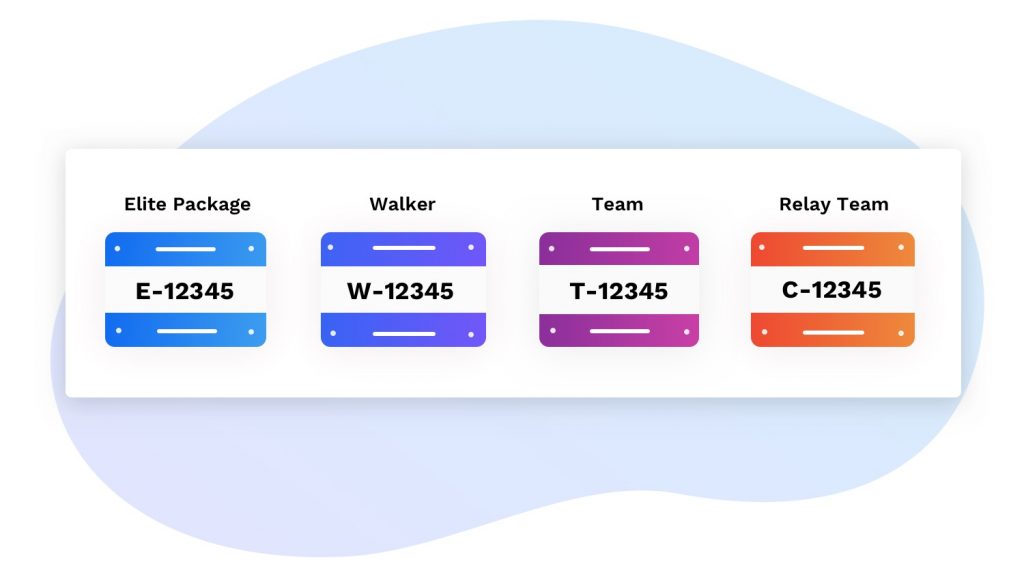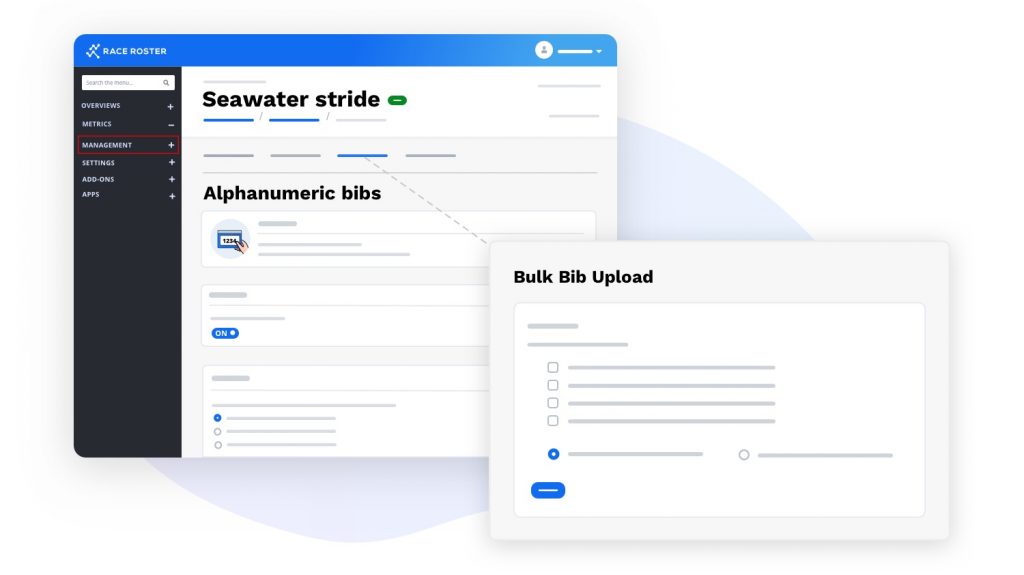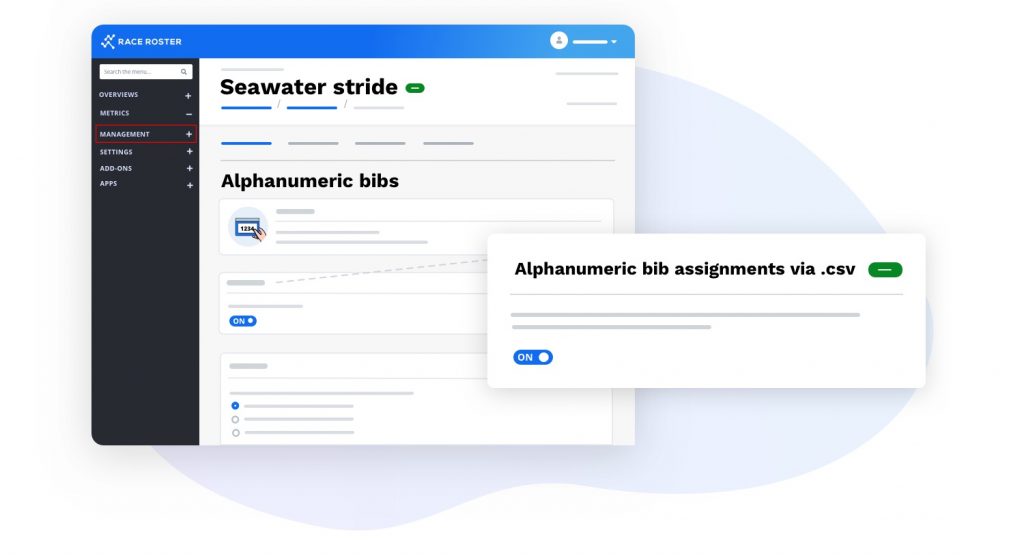We’ve recently introduced alphanumeric bibs, giving you the ability to include numbers, letters, dashes, and underscores on participant bibs.
There are many ways you can make use of alphanumeric bibs. We’ve outlined a few ideas to get you started below.
Quickly identify participant types
Alphanumeric bibs can help you spot certain participants, making it easier for you to identify and support those who may require special treatment. A few examples of this are:
- Elite participants
You may have elite participants who should be given a special “elite package” at packet pick-up or have the ability to access VIP tents. Their alphanumeric bib could be structured as “E-12345” to help quickly identify them as elites. Alternatively, you could use their first name instead of a number to ensure they stand out amongst all non-elite participants who only contain a number. This is a great way to offer recognition and make your elites feel special. Additionally, this could be used as a registration driver in an event marketing campaign. - Participants with unique needs
You may have something planned to accommodate those with unique needs. Alphanumeric bibs will help make these participants easier to spot. - Participants in specific categories
You may want to identify participants in a particular category, such as those who have signed up to walk. For example, you could create a bib that says “W-12345” or simply put “Walker” if a number is not useful, allowing you to quickly determine who will be walking the event. - Participants on a team
You can help make teams more distinguishable by displaying their team name instead of a bib number. Alternatively, you could use a combination of letters and numbers to achieve this, such as “TEAM_12345”. - Individuals participating on a relay team
Relay team participants may be assigned the same bib number, but they might still want to see their individual results in all the categories they participated in. You could use alphanumeric bibs to append a letter in order to help signify their split times. For example, you could use “R-12345” (Running) “S-12345” (Swimming) and “C-12345” (Cycling) to indicate the category they participated in.

Data cleanliness & efficiency
Alphanumeric bibs will help save you time by allowing you to manage everything in one place. You can manually make all of your edits on Race Roster, eliminating the need to export and manage multiple lists somewhere else. You are also able to upload your alphanumeric bib data in bulk, making this process quick and efficient. Additionally, alphanumeric bibs can be used as a pillar of organization for your event. You are able to use this feature to categorize your participants, making scanning and managing your data a breeze.
In conclusion, utilizing alphanumeric bibs can help you organize your bib data, save you time, and allow you to identify different types of participants to better support them and enhance their overall event experience.

Ready to enable alphanumeric bibs?
To enable alphanumeric bibs on your event, visit your event organizer dashboard and go to “Management > Participants > Bib assignments“. From the bib assignment settings page, you will be able to turn on the alphanumeric bib assignments toggle and upload bib assignments.
Please contact us at director@raceroster.com if you have any questions or visit our knowledge base article: How to enable alphanumeric bibs.

*When the alphanumeric bibs toggle is ON, automatic bib assignments will be turned OFF going forward. However, past automatic bib assignments will be maintained.
We encourage you to connect with your timer prior to assigning alpha numeric bibs to ensure your preferred format is compatible with their scoring and timing technology.
As always, If you have any questions, please don’t hesitate to resource us!